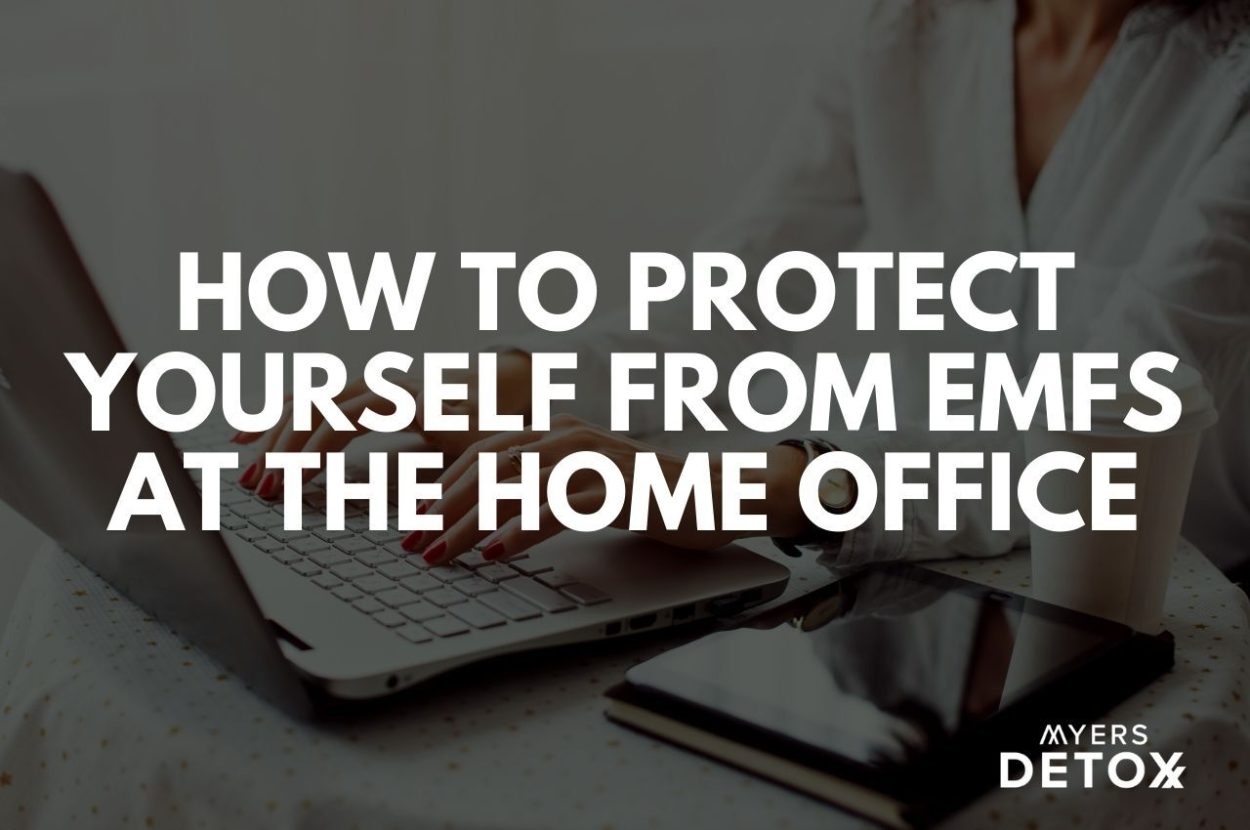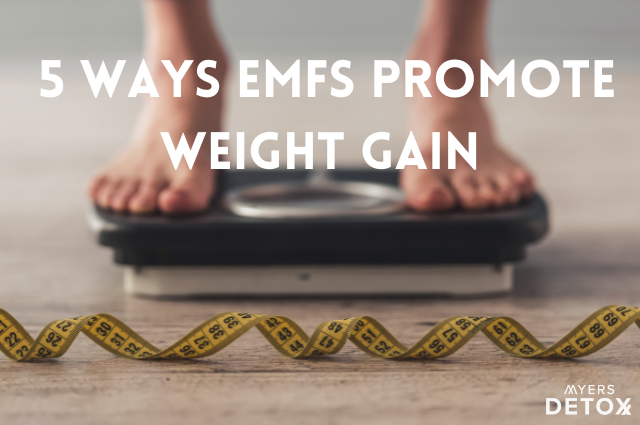As working from home becomes the new norm, the time we spend in front of our screens has skyrocketed. In-person meetings and lunches have turned into zoom calls. Even casual catch-ups with your friends and family have become a virtual affair.
Technology has made it possible for you to stay connected to the ones you love. It’s also helped many people maintain business relationships and keep projects going. However, there are some significant drawbacks to the excessive amount of time people are spending in front of a screen these days.
The major drawback: EMF radiation from your devices.
In this article, you’ll learn:
- How EMFs are killing your productivity
- The direct effect that screen time has on your cognitive function
- How EMFs are draining your energy and inhibiting you from getting a restful night of sleep
- The simple and effective way to mitigate the harmful effects that screen time may be causing you
The Drawbacks Of Extra Screen Time
FaceTime, Zoom, Skype, and other technologies have been nothing short of life-savers during this pandemic. But every hour you spend in front of your screen is an extra hour of being bathed in EMFs.
While it may seem like working virtually is the best (and only) way to get things done these days, all that screen time and WiFi exposure may be silently working against you. Below are some of the most concerning ways that EMFs may be inhibiting, instead of enhancing your work performance.
Cognitive Function
One of the more direct effects that screen time, and EMF exposure, can have on your work performance is the toll it can take on your cognitive function.
Research conducted on humans and animals shows that EMF exposure can impact learning and memory. Other neurological issues related to the exposure of EMFs include the inability to concentrate, headaches, and dizziness. These effects on your central nervous system may directly impact your ability to carry out functions at work[1][2].
Why do EMFs so easily impact the central nervous system? Many people believe it’s because your central nervous system is highly electrically charged — making it vulnerable to the frequencies that EMFs emit[3].
For instance, research shows that WiFi can directly impact the electrical activity in your brain — causing changes to your brain waves and inducing oxidative stress[4].
What’s more, one study found that EMFs from mobile phones directly impact the hippocampus region of the brain. Your hippocampus plays a major role in learning and memory and has an impact on your ability to pay attention. The researchers discovered that participants experienced lower scores on a cognitive test with increased cell phone use, displaying a decreased ability to pay attention and concentrate[5][6].
Sleep
There’s nothing more frustrating than trying to get work done after a poor night’s sleep. In fact, getting enough sleep is one of the most crucial components of high cognitive performance.
While you sleep, your brain gets to do a reboot. The information you learned the previous day gets transferred from short term to long term memory, connections between your brain cells are strengthened, and your memories are reactivated. You’re also more creative, able to access higher-level problem-solving skills and have a longer attention span.
However, when sleep is disrupted, your ability to pay attention plummets, and your working memory becomes stifled. This has a direct impact on long-term memory, decision making, and vigilance. In short, your sleep-deprived brain only works at half-capacity[7][8].
So, where do EMFs come into the picture?
Your sleep-wake cycle is controlled by something called your circadian rhythm. Your circadian rhythm is like an internal clock that works through hormones and chemical signals to alert your body when it’s time to wake up and slow down when it’s time for bed.
There are many factors that can affect your circadian rhythm, including both lifestyle and dietary choices. In general, however, your circadian rhythm takes cues from your internal and external environment.
The primary hormone involved in helping you fall asleep is melatonin, which is released from your pineal gland. When your pineal gland senses a lack of sunlight, it initiates the release of melatonin to help your body start winding down[9].
The problem is, your pineal gland senses the EMFs that are streaming through your home as sunlight. The vibration from the EMF frequencies irritate the pineal gland so it may not function normally. The result? It never gets the message that it’s night time, and melatonin production slows down — leaving you in the “wake” phase of your sleep-wake cycle for too long.
If you’ve ever found yourself physically tired, but unable to shut off for the night, it could be due to high levels of EMFs inhibiting your brain from producing adequate melatonin[10].
Stress
One of the greatest hindrances to creativity and productivity is stress. Research shows that it’s pretty plain and simple — the more stressed you are, the less productive and creative you will be. Psychological well-being is paramount if you want to show up as your best self to both work and relationships[11][12][13][14].
Of course, life comes with its own set of stressors that you can’t really control. Work, finances, family dynamics, and so on, all play a role in your cumulative amount of stress from day to day. Yet, while life circumstances aren’t always perfect, your emotional system is set up to deal with a certain amount of unease. And of course, there are practices like meditation, yoga, and breathwork that can help you manage stressful situations.
But what happens when your environment is silently adding to your stress response? Research shows that EMFs may be a hidden source of “stress” on your body that upregulates your stress response and compounds whatever real-life stressors you have going on.
Researchers measure people’s stress response by assessing whether they are in a sympathetic or parasympathetic mode.
In sympathetic mode, also known as your “fight or flight” response, your body and mind are in a state of stress. Your heart rate increases, blood flow increases, and you become more vigilant and focused on whatever it is that is the source of your unease.
In parasympathetic mode, also known as your “rest and digest” response, your body is relaxed, blood flows to your internal organs to assist with digestion, blood pressure goes down, and you’re generally cool, calm, and collected.
Research shows that in the presence of EMFs, the sympathetic nervous system is activated, while the parasympathetic nervous system is down-regulated. In some, this activation may result in heart palpitations, anxiety, and pain or pressure in the chest[15].
Animal research also shows that in the presence of EMFs, there’s an increase in the secretion of the stress hormones cortisol and adrenocorticotropic hormone (ACTH)[16][17].
Being in chronic nervous system sympathetic mode, and the steady stream of stress hormones, are a recipe for disaster when it comes to maintaining focus and productivity. Even if life is generally low-stress at the moment, these physiological conditions could trick you into feeling stressed, overwhelmed, and, therefore, unable to work efficiently.
Energy
If you want to bring your A-game to work, you need the energy to back you up. Similar to a poor night’s sleep, when you’re not moving energy through your body efficiently you can feel fatigued, drained, and foggy.
Your body’s energy supply comes down to two things: your ability to extract energy from food, and the electrical currency that is innate in each and every one of your cells.
When most people talk about energy production in your body they are referring to the ability of your cells to create ATP (energy molecules) from the food you eat. This process is carried out in the “powerhouse” of your cells called the mitochondria.
However, you also carry a different energy currency in your body — electricity.
Just like a battery that gets charged up with an electrical voltage, your cells have a voltage of their own. This electrical charge allows for communication and signaling between cells, and is involved in a range of biological cascades that keep your body functioning[18].
As you age, the voltage energy of your cells declines, and overall metabolism slows in your body. While this is a natural process, research shows that the frequencies that EMFs emit can have the same effect as aging — literally draining your cells of their powerful voltage.
As you can imagine, sitting in front of your computer, bathed in WiFi all day can have a significant impact on your cellular voltage.
When your cells don’t have the electrical charge they need to operate properly, your intercellular communication will slow down, nutrient absorption is impacted, and your ability to create and move energy is altered[19].
How To Protect Yourself From EMFs At The Home Office
If you’re already in a panic about the amount of screen time you’ve been clocking — take a deep breath. Although it’s true that EMFs may be hindering your work performance, there are a lot of tips and tricks you can use that will reduce the impact of EMFs on your health. Here are some of my top suggestions for protecting yourself from EMFs in your home.
Reduce Screen Time
Okay, this may seem obvious, but it has to be said — where you can, reduce the amount of time you spend on your computer, tablet, and phone. That means most likely keeping social media at a minimum, which is stress-inducing anyways.
This may also mean that after your workday, you’ll put your computer away for the night. Or perhaps that hour-long weekly skype meeting could be turned into an email exchange?
There will most certainly be calls and meetings that must be done on zoom or skype, but whenever possible, try to limit the time you spend on your computer.
Work Off Of Your Battery Charge
When your devices are charging, they will emit higher amounts of EMFs than when you have them off the charger. When using your computer, do not keep it plugged in.
If you can, charge your devices (in a separate room) while you sleep at night. This way, you can wake up to a fully charged computer, tablet, or phone, and work off your battery.
If you tend to lose battery halfway through your workday, then re-charge at lunchtime and pick back up after your break.
Put Your Phone In Airplane Mode
I know this one can be tricky if you expect calls throughout the workday. If possible, direct people to your landline instead of spending hours on your cell phone. You can even keep your cell phone in a separate room to distance yourself from the EMFs with your ringing on high, so you hear it if it rings. At a minimum, keep your phone at arm’s length to dramatically reduce EMF exposure.
However, when you can put your phone on airplane mode, it is an excellent way to cut down on your EMF exposure.
Turn WiFi Off At Night
While you sleep, there is no need for WiFi to be streaming through your home. Before bed, make a habit of turning off the WiFi for the night. You can even flip the script altogether and only turn your WiFi on when you need it. There are even routers that turn off when they are not in use automatically.
To take things to the next level, avoid WiFi altogether by installing hardwired internet in your home.
If only we could turn off all of our neighbor’s wifi internet at night!. More on that issue in a moment.
Use Grounding Techniques Like Earthing
Earthing is a grounding technique that’s getting more and more attention as research continues to show the positive effects that it can have on your body.
Simply put, earthing is the process of allowing your body to come into contact with the earth. Walking barefoot and swimming in lakes and the ocean is the most common way to “earth” your body. As you allow yourself to walk on the earth, you come into contact with the natural electrons present in the ground.
Research shows that earthing is one way to combat the impact of electromagnetic fields on your body[20].
If you have a few minutes between meetings, or at the end of the day, walking barefoot outside on the earth or swimming in the ocean is an excellent practice to help you recalibrate from a day of EMF exposure.
The Easiest Way To Reduce The Impact Of EMFs
Using the above techniques will help you reduce some of the EMF radiation you encounter daily. However, my go-to method for reducing EMFs’ harmful impact is actually much simpler than any of the above options.
It’s called the Harmoni Pendant.
 The Harmoni Pendant is a small necklace that you can wear every day that was designed with a scientific understanding of electromagnetic fields and sacred geometry. Research shows that wearing the Harmoni Pendant can help you mitigate EMFs’ harmful effects on average by 48%.
The Harmoni Pendant is a small necklace that you can wear every day that was designed with a scientific understanding of electromagnetic fields and sacred geometry. Research shows that wearing the Harmoni Pendant can help you mitigate EMFs’ harmful effects on average by 48%.
What’s more, a recent study of the Harmoni Pendant on 101 patients showed that people enjoyed:
- A 530% increase on average in energy
- A 700% improvement on average in their heart rate variability score – a measure of stress used in studies across the country, including Harvard University studies
- Enhanced regulation of the body’s autonomic nervous system on average by 310%
- Improved bodily and circadian rhythms (aka improved sleep) by an average of 160%
Can you imagine how much more productive you would be with more energy, less stress, and better sleep? This necklace was a game-changer for me and thousands of people that have decided to take steps to mitigate their EMF exposure.
One of the best things about the Harmoni Pendant is that it goes with you everywhere. That means when you’re grocery shopping, at a friend’s home, or even taking a walk outside, you can rest assured that the Harmoni Pendant is working to keep your energy field balanced.
You can do so much to control EMF in your home, but you cannot control the EMF emitted by neighbor’s wifi or their smart meter or cell phone towers. The Harmoni Pendant goes with you everywhere so you have peace of mind that you are addressing this very unfortunate reality of modern life.
People wearing the Harmoni Pendant experience huge reductions in stress, and simultaneous gains in productivity. One Harmoni Pendant user explained:
 “Our whole family wears the Harmoni Pendant. When you wear the Harmoni Pendant, your body shifts OUT of the fight-or-flight state and into the parasympathetic (calm) mode and prevents EMF radiation from getting “stuck” inside your body. We feel more energetic, more focused and healthier since we “Harmoni-zed” our family!!”
“Our whole family wears the Harmoni Pendant. When you wear the Harmoni Pendant, your body shifts OUT of the fight-or-flight state and into the parasympathetic (calm) mode and prevents EMF radiation from getting “stuck” inside your body. We feel more energetic, more focused and healthier since we “Harmoni-zed” our family!!”
– Trina Felber, RN, of Primal Life Organics
It’s much easier to focus and get your work done when your mood is light and calm, as another Harmoni Pendant described:
 “My Harmoni pendant allows me to lower my stress while protecting me from harmful electromagnetic frequencies. I wear it everyday and feel AMAZING!”
“My Harmoni pendant allows me to lower my stress while protecting me from harmful electromagnetic frequencies. I wear it everyday and feel AMAZING!”
– Dr. Fabrizio Mancini, best-selling author with appearances on Dr Phil, Dr Oz and The Doctors
Again, taking care of your home and workspace is crucial in the battle to protect yourself against EMFs’ harmful effects. But if you want to feel more balanced wherever you go, the Harmoni Pendant is a no-brainer.
 “We had one really impressive benefit that happened to several of our participants, which was improved sleep, and it was dramatic…I do recommend it to my patients.”
“We had one really impressive benefit that happened to several of our participants, which was improved sleep, and it was dramatic…I do recommend it to my patients.”
– Dr. Lisa Koche, MD, triple boarded in Internal Medicine, Bariatrics and Anti-Aging and Regenerative medicine
I like to suggest that the Harmoni Pendant be your first step in supporting your body’s defense against EMFs’ harmful effects. Many people report immediate relief from EMF effects when wearing a Harmoni Pendant — personally, I never take mine off except when I sleep and shower! Once you feel more calm and focused from the reduction in stress that you’ll experience from wearing the pendant, you can move on to the tips and tricks mentioned above.
Takeaway
Technology has been an incredible force for good during these difficult times. Without the ability to use our devices for communication we would be missing out on baby showers, weddings, birthdays, along with crucial work opportunities.
The downside, however, is that along with these gifts, your devices also come with a lot of EMF baggage. If you’ve been feeling more tired, anxious, or unable to concentrate at work, it may be due to the extra screen time you’re clocking in.
The good news is, it’s never too late to cut back on your EMF exposure and to start reducing the harmful effects that EMFs can have on your health. You don’t need to avoid communicating virtually; simply take a few intentional steps to mitigate your EMF exposure, and you’ll likely notice the differences immediately.










